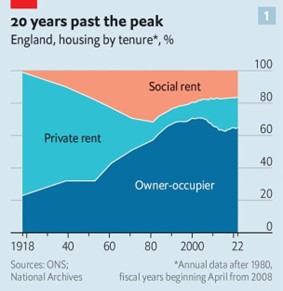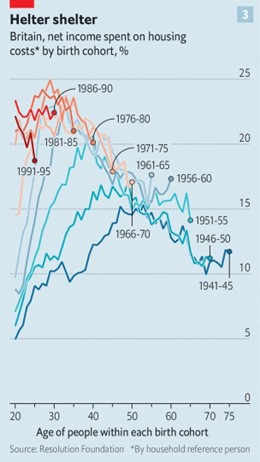Today there are 4.2 million people in need of social housing in England including people living in overcrowded, unsuitable and unaffordable homes or homeless. We are in a housing emergency, caused by years of cuts and short term piecemeal policy decisions. What the social housing sector urgently needs to be able to tackle the housing crisis is long term certainty – both in policy and funding.
Only a few months into power, the new government has already been promisingly vocal on housing. Secretary of State, Angela Rayner, has announced an overhaul of the planning system, reintroduced more ambitious mandatory housing targets and recognised the role of social and affordable housing in achieving the government’s ambition of building 1.5m homes over this parliament.
Housing associations are ready to play their part in making this happen, but they’re starting from a fragile financial position. For starters, successive rent freezes and caps mean that rental income is 15% lower in real terms than it was in 2015; this equated to £3bn in lost rental income for housing associations last year. Alongside this, the sector is also facing significant financial pressure from building safety costs. Since social housing doesn’t have access to government building safety funding, housing associations estimate they’ll need to spend in excess of £6bn making all their buildings safe over the next decade. Last year, housing associations increased investment in their existing homes by nearly 20%, spending a record £7.7bn on repairs and maintenance.
All of these competing pressures, on top of direct cuts to funding for new homes, has inevitably led to a reduction in plans for building new affordable and social housing at a time when they are needed more than ever.
Earlier this year, the Levelling Up, Housing and Committee’s report into the finances and sustainability recognised these financial barriers. For housing associations to have the confidence to plan for the future and help the government meet its ambition of building 1.5m homes, certainty of rental income and urgent funding is needed at this year’s Autumn Budget and Spending Review.
A new Affordable Homes Programme would be pivotal in supporting the social housing sector to build the number of homes the country needs. Ideally this would shift focus towards social rent, with greater flexibilities around grant rates and funding for regeneration. To deliver the step change needed in the delivery of social housing, a new Affordable Homes Programme would need to provide £4.6bn of funding per year on average for the first Parliament, on a minimum five-year rolling basis.
The Warm Homes: Social Housing Fund (formerly the Social Housing Decarbonisation Fund) is also playing a crucial role in helping the country to meet its net zero targets. However the sector will need to invest up to £50,000 per home by 2050 to ensure they are safe, high quality, decarbonised, and meet new regulatory requirements. The introduction of a new long-term Social Housing Investment Fund of £2bn per year would allow housing associations to continue their vital work in ensuring their homes are sustainable and fit for the future, while unlocking capacity for the supply of new homes.
There is also a crisis in supported housing which provides homes with support, supervision and care. NHF research shows that one in three supported housing providers have been forced to close services such as women’s refuges, homeless hostels, and older people’s housing over the past twelve months, due to the worsening impacts of funding cuts and rising costs. Without supported housing, an additional 71,000 people would be homeless or at risk of homelessness, we would need 14,000 more inpatient psychiatric places, 2,500 additional places in residential care and 2,000 more prison places. That’s why the government must reinstate ring-fenced funding for housing related support, with at least £1.6bn per year of funding, to ensure the continued viability of this vital provision.
Uncertainty around rents has also stopped housing associations from effectively planning for the future. A commitment from the government to a 10-year rent settlement would give social landlords the certainty they need to plan investment over the long-term while ensuring social rents remain affordable for residents. Alongside this, widening access to the Building Safety Fund to cover social housing, would help relieve the some of the financial pressures so many housing associations are facing.
The beginning of a new parliamentary term is the best time for bold action and long-term thinking, and that’s exactly what is needed for the government to be able to meet its housebuilding ambitions. Housing associations are ready to work with the new government to build the affordable homes the country needs and end the housing crisis for good.











